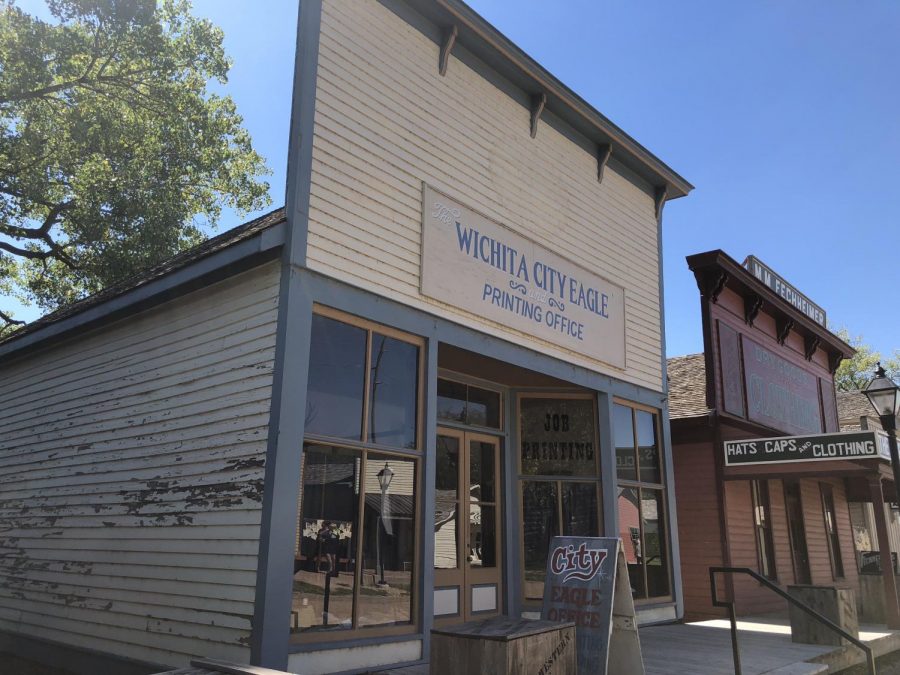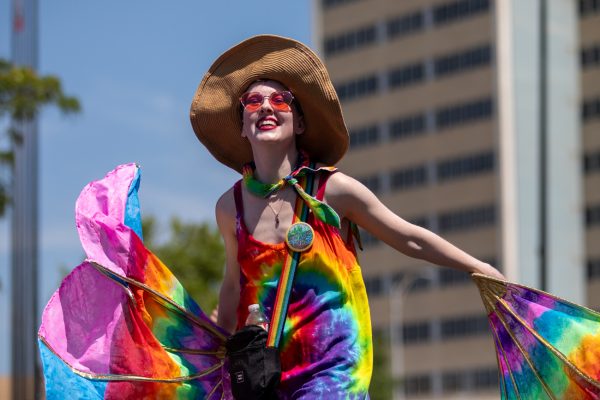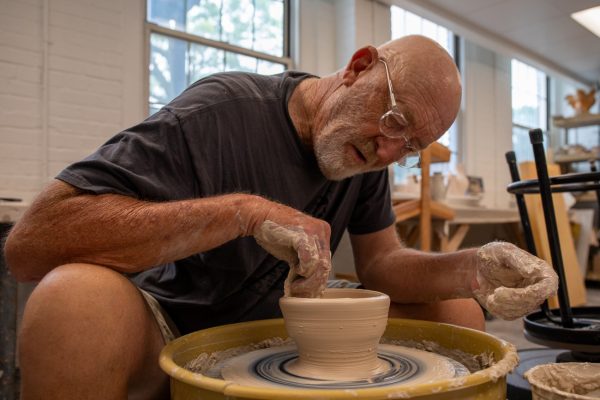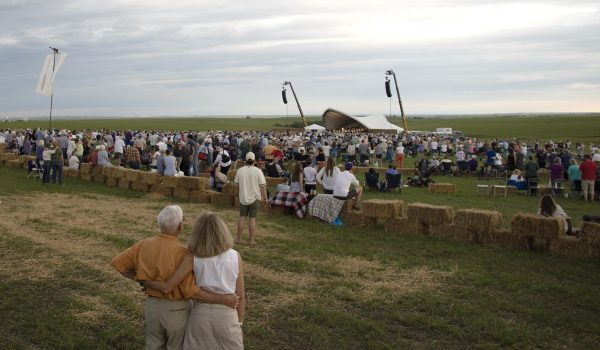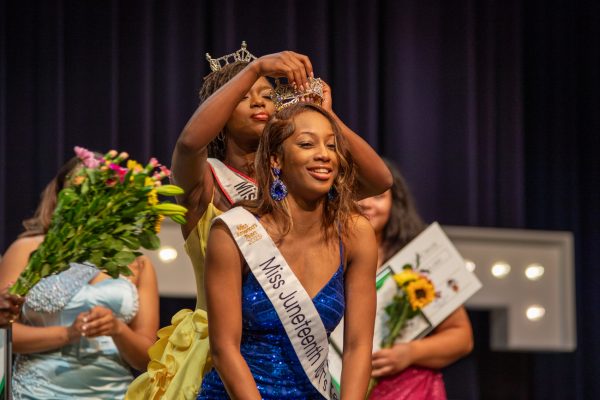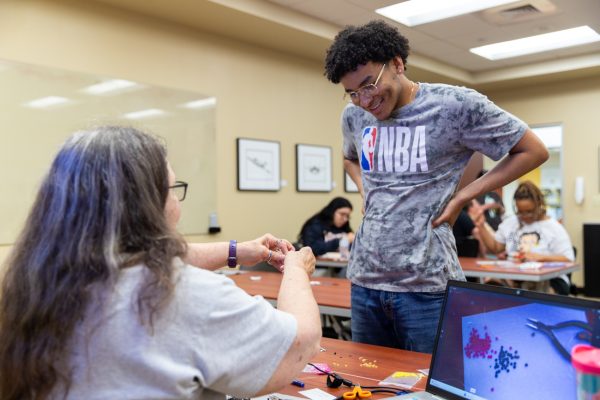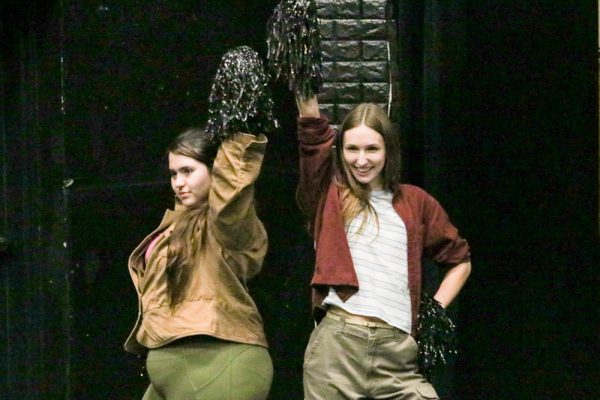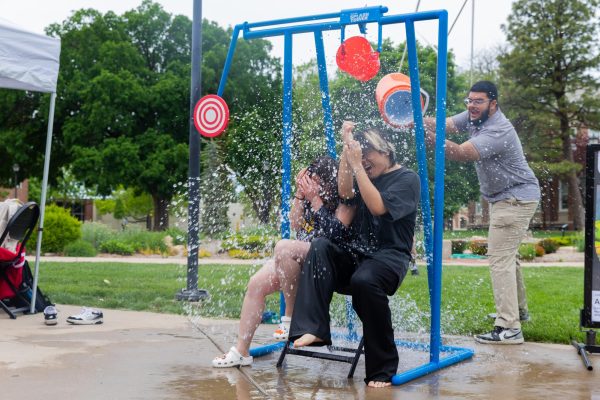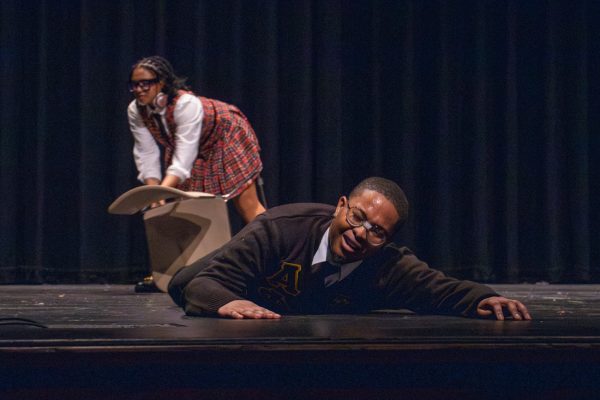History comes to life at Old Cowtown Museum
The Wichita City Eagle building at the Old Cowtown Museum represents the office and printing business Marshall Murdock, founder and editor of The Wichita Eagle. The building is one of 54 historic and recreated buildings at Cowtown.
In the heart of Wichita, sprawled along the banks of the Arkansas River, lie 23 acres of land suspended in time. Located on the original Chisholm Trail, the Old Cowtown Museum is a living history exhibit that showcases life in an 1870s plains cattle town.
Equipped with 54 historic and recreated buildings — from Fritz Snitzler’s Saloon to O’Hara’s Barber Shop to Gill Mortuary — reenactors in period-appropriate clothing regale museumgoers with facts and anecdotes from the era.
Twice a day, visitors can gather on Main Street for staged gunfights full of shooting, shouting, and suspense. True to the old Western trope, the first showdown of the day is at high noon every day from Tuesday through Saturday. Admission is free on Sunday.
Tedd Fitzmyer is a precision rifle shooter and Cowtown reenactor. Sunday, decked out in spurs, boots, and a cowboy hat, Fitzmyer took in the sights of the museum with his three prairie dress-clad daughters as they sipped old-fashioned root beer from the saloon.
“It’s better than sitting at home on the couch,” Fitzmyer said.
Cowtown draws curious visitors from all over the world.
“That’s another cool thing about this place,” Fitzmyer said. “We get people from everywhere. It’s pretty neat because they come right here. It’s authentic.”
He said seeing what life was like in the 1870s puts things into perspective.
“The significance is to show people how good we have it and to stop crying about crap,” Fitzmyer said. “That’s what needs to happen, you know? Could be a lot worse.”
Michael “Ogre” Bettes has worked off and on as the Cowtown blacksmith since 1998, toiling away over the flame. His best-seller in the gift shop is the 13th-century Russian rose with a barbed wire stem.
His hands are scarred with burns from working the oven.
“I get sweaty. I get dirty. But it’s a great thing,” Bettes said.
“This is my happy spot.”
In the next few months, Bettes said he hopes to start teaching veterans with post-traumatic stress disorder how to blacksmith.
“This is a violent hobby,” Bettes said. “How many things can you beat the heck out of, not get in trouble, force it into the shape that you want, and be a lot less stressed?”
Marilyn Isenegger is president of the Cowtown Social Club. Sunday found her sewing next to the wooden checker board in the drugstore while members of the social club peddled their homemade baked goods.
Isenegger’s great uncle, Orville Bell, was one of the people who got Cowtown up and running.
“There was a bunch of people back in the 50s — late 40s and early 50s — that started seeing historic things around the city demolished, and they cared,” Isenegger said.
Those people founded Historic Wichita Inc. in 1949. In 1952, they began relocating buildings to the plot of land that would become Cowtown. There are nearly 30 authentic 19th-century buildings on the museum’s grounds that were preserved and relocated.
Isenegger got involved at Cowtown about 10 years ago, when the museum was in the midst of financial turmoil.
“There was some problems going on here, so I came to one of the board meetings and I heard the spirit of my uncle say, ‘Why are you not involved?’” Isenegger said. “So I got involved.”
The City of Wichita has since taken over daily operations of the museum and is financially responsible for its facilities.
Isenegger said that, for her, preserving local history is personal. She sees it as vital to future generations of Wichitans.
“My family came here in cowtown time,” Isenegger said. “But that’s the thing — I agree, if you don’t know where you’ve been, you don’t know where you’re going.”
Isenegger said she, like her great uncle, can’t bear to watch local history go to the wayside.
Earlier this month, Lawrence-Dumont Stadium hosted the last game of baseball in its 84-year history. The city recently lured a Triple-A team from New Orleans and will erect a new stadium, but Isenegger said she will be deeply saddened to see Lawrence-Dumont, which was the sixth oldest operating ballpark in the country, be demolished.
“It grieves me that we’re building a new stadium,” Isenegger said. “I go up and down McLean a lot, and every time I pass it, I cry, because I’m going to hate to see that gone.”
Isenegger said that’s why Cowtown’s mission of preserving history is so important to her.
“You can’t be ashamed of where you came from, and when we don’t protect what we have, that’s like what we’re saying. ‘Oh, I don’t want to remember that,’ you know.” Isenegger said. “And I do. I want to remember that.”

Matthew Kelly is a former editor-in-chief and managing editor for The Sunflower. Kelly graduated in 2020 with a bachelor’s degree in political science...



